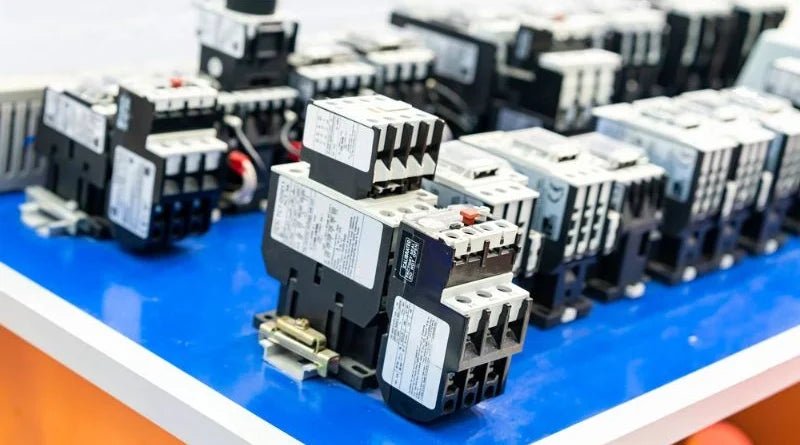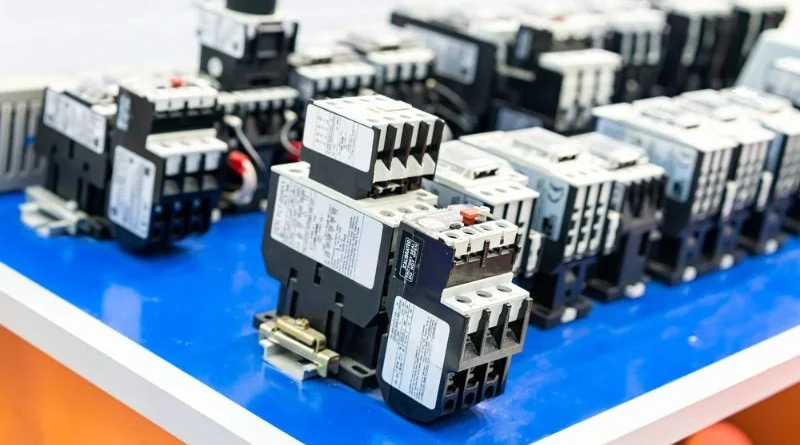
The thermal relay, a term unfamiliar to many, is the key to efficient temperature control in many applications. From industrial machines to household appliances, this ingenious device plays a crucial role in protecting devices and ensuring optimal performance. In this introduction, we explore the fascinating world of thermal relays and examine their features, benefits, and the diverse industries that rely on them.
Essentially, a thermal relay is a protective device that monitors temperature fluctuations and triggers a response when predetermined limits are exceeded. By detecting excessive heat, it acts as an important safety mechanism, preventing damage and potential dangers. This technology has revolutionized our approach to temperature management, providing a reliable and efficient solution for countless industries.
One of the main advantages of a thermal relay is its versatility. Whether in manufacturing, where it protects motors and transformers, or in household appliances such as refrigerators and air conditioners, this device ensures temperatures remain within safe limits. This not only extends the useful life of the machines, but also minimizes the risk of accidents or breakdowns.
Furthermore, the complex functioning of a thermal relay is a testament to human innovation. Its ability to accurately detect temperature fluctuations and respond promptly is a testament to advances in sensor technology. By using a combination of bimetallic strips, resistors and electromagnets, thermal relays can respond quickly to temperature changes and maintain the delicate balance necessary for optimal performance.
In this exploration of thermal relays, we will delve into their construction, functionality, and the critical role they play in various industries. From understanding the different types of thermal relays to exploring their applications in different environments, this journey promises to reveal the hidden complexities of this remarkable device. So join us on this fascinating exploration as the world of thermal relays unfolds before our eyes.
What is a thermal relay?
A thermal relay is an electrical device that protects circuits and motors from overheating. It is an important component in many industrial and commercial applications where the risk of overheating is high.
One of the main functions of a thermal relay is to monitor the temperature of the connected circuit or motor. This is done using a bimetallic strip or a temperature-sensitive resistor. When the temperature exceeds a certain limit, the thermal relay is activated and opens the circuit, interrupting the flow of current.
The main advantage of using a thermal relay is that it provides a reliable and automatic protection mechanism. It can quickly detect and respond to overheating, preventing damage to the circuit or motor. This is particularly important in applications where the cost of downtime or equipment failure is high.
Thermal relays are widely used in various industries, including manufacturing, power generation, and HVAC systems. They are often used with other protective devices such as circuit breakers and fuses to provide a comprehensive protection system.
In summary, a thermal relay is an important component in electrical systems that prevents overheating and possible damage to circuits and motors. Its automatic and reliable protection mechanism makes it an indispensable device in many industries. By monitoring temperature and stopping the flow of electricity when necessary, thermal relays play an important role in maintaining the safety and efficiency of electrical systems.
How does a thermal relay work?
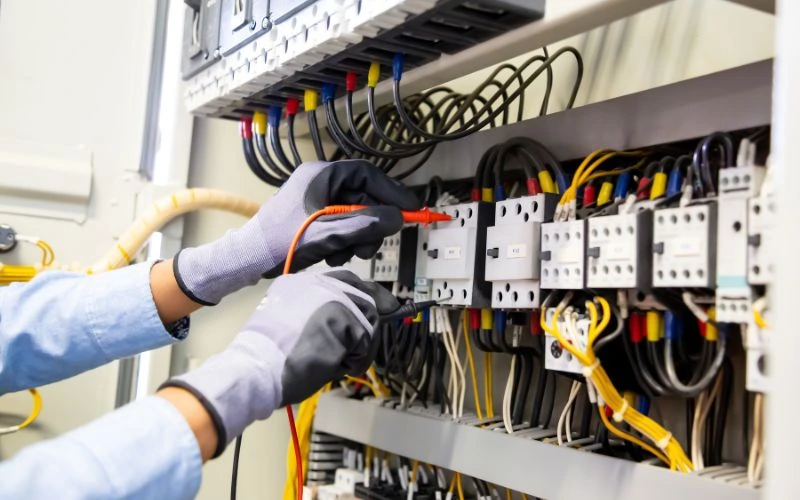
A thermal relay is an important component in electrical systems that protects motors and other electrical devices from overheating. It works on the principle of thermal expansion and contraction.
When current flows through the bimetallic strip in a thermal relay, it heats up and causes the strip to bend. Depending on the application, this bending movement triggers the relay to open or close the circuit. Bimetallic strip consists of two different metals with different coefficients of thermal expansion, for example copper and steel. As the strip heats up, the metal with the higher coefficient expands more, causing the strip to bend.
The curvature of the bimetallic strip controls the function of the thermal relay. When the strip bends enough, it releases a latch to open the circuit or engages a latch to close it. This action is crucial to prevent damage to motors and other electrical devices due to excessive heat.
The thermal relay also contains a heating element connected in series with the load. The heating element is designed to generate heat when electricity flows through it. As the current increases, the heat generated by the heating element also increases. This heat causes the bimetallic strip to bend and activate the relay.
In short, a thermal relay uses a bimetallic strip that bends due to the heat generated by the current. This twist causes the relay to open or close the circuit, protecting against overheating. When engineers and technicians understand how a thermal relay works, they can ensure the safe and efficient operation of electrical systems.
What are the applications of a thermal relay?
Thermal relays are versatile devices used in various industries and systems. These relays protect electrical devices from overheating and prevent possible damage or danger. Let us look at some of the common applications of thermal relays.
In the manufacturing industry, thermal relays are essential for protecting motors and other electrical equipment. They monitor the temperature of these devices and act as a protection mechanism, interrupting the circuit when the temperature exceeds a certain limit. This helps prevent engine wear and ensures the machines work properly.
Thermal relays are also commonly used in HVAC (heating, ventilation and air conditioning) systems. They monitor the temperature of compressors, fans and other critical components. Upon detecting an abnormal increase in temperature, the thermal relay can quickly shut down the system, preventing further damage and potential fire risks.
In the field of renewable energy, thermal relays are used in solar plants and wind turbines. They help monitor the temperature of inverters, transformers and other electrical components. By immediately shutting down the circuit in case of overheating, thermal relays protect these expensive and sensitive devices, ensuring the efficient production of clean energy.
Another important application of thermal relays is electric motors. Whether in industrial machines or household appliances, thermal relays prevent motor failures due to excessive heat. By monitoring the engine temperature, these relays can break the circuit and provide a reliable protection mechanism.
In summary, thermal relays protect electrical devices from overheating in various industries and systems. From manufacturing to renewable energy and electric motors, these devices ensure the safe and efficient operation of critical components.
What are the benefits of using a thermal relay?
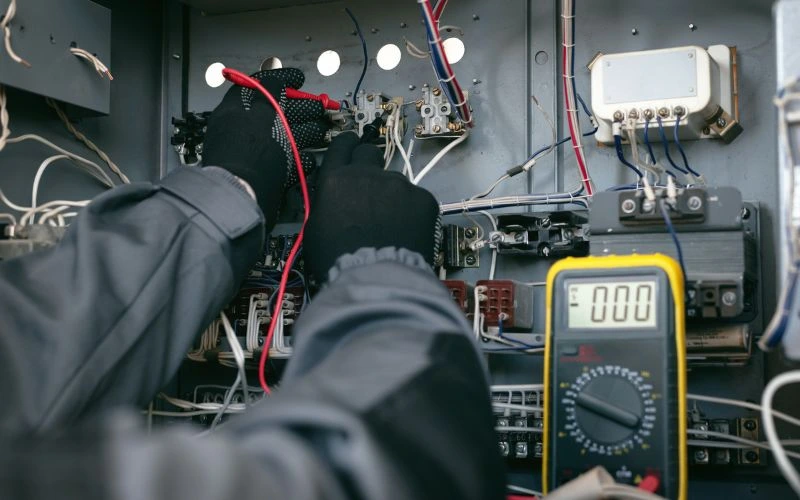
A thermal relay is an important component in electrical systems that protects motors and other electrical devices from overheating. It monitors the system temperature and triggers a response if it exceeds a certain threshold. Although there are different types of relays, the thermal relay offers several advantages that make it a popular choice in many applications.
One of the main advantages of using a thermal relay is its simplicity. Unlike other types of relays that require complex programming or external control devices, a thermal relay works on the principle of thermal sensitivity. This simplicity not only facilitates installation and use, but also reduces the likelihood of breakdowns or errors.
Another advantage of thermal relays is their reliability. Because they rely on temperature sensors rather than mechanical or electrical components, they are less susceptible to wear and tear. This means they can operate for long periods of time without requiring frequent maintenance or replacement. Furthermore, thermal relays have a long service life, which makes them an economical solution for protecting electrical systems.
Thermal relays also offer flexibility in terms of customizable settings. Users can adjust the relay response temperature according to their specific needs. This allows precise control and protection of the electrical system and prevents possible damage from overheating.
Furthermore, thermal relays are highly sensitive and can detect even small changes in temperature. This ensures that an abnormal rise in temperature is detected immediately so that quick action can be taken to prevent further damage. This sensitivity is critical in critical applications where even a small delay in response can have significant consequences.
In summary, thermal relays offer several advantages in protecting electrical systems against overheating. Their simplicity, reliability, adjustability and sensitivity make them an ideal choice for a variety of applications. With a thermal relay, users can ensure the safety and longevity of their electrical devices and minimize the risk of costly damage.
What are the disadvantages of using a thermal relay?
A thermal relay is an essential part of electrical systems and protects against overload and excessive heat. Although thermal relays offer several advantages, their disadvantages must also be considered. In this article we will explore some of the disadvantages of using a thermal relay.
One of the main disadvantages of thermal relays is their limited accuracy. These relays rely on the heat generated by the current flowing through the circuit to activate. This means they may not respond quickly to sudden changes in temperature. This can be problematic when immediate action is required to prevent damage to electrical equipment.
Another disadvantage is the possibility of false triggers. Thermal relays are designed to trip when the temperature exceeds a certain threshold. However, external factors such as ambient temperature or the presence of nearby heat sources may cause the relay to trip unnecessarily. This can lead to unnecessary operational interruptions in the electrical system.
Additionally, thermal relays can be affected by environmental conditions. Extreme temperatures, humidity and dust can affect relay performance and cause it to malfunction or fail. Regular maintenance and monitoring is required to ensure the relay functions correctly in all conditions.
Furthermore, thermal relays are not suitable for all applications. They are mainly used to protect motors and other heavy electrical equipment. For more sensitive devices or circuits that require precise temperature control, alternative protection methods may be more appropriate.
In summary, although thermal relays provide valuable protection against overloads and excessive heat, they also have their limitations. Limited accuracy, possibility of false tripping, susceptibility to environmental conditions, and limited suitability for certain applications are some of the disadvantages associated with using a thermal relay. It is important to carefully consider these disadvantages and consider alternative protection methods if necessary.
What different types of thermal relays are there?
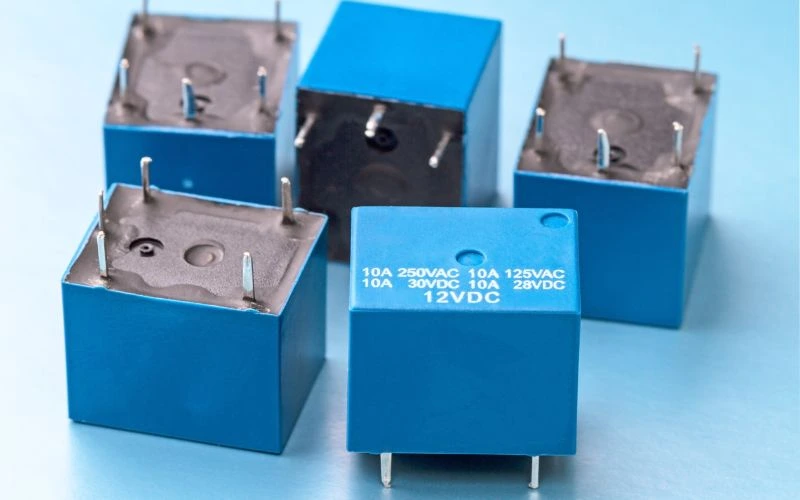
Thermal relays are important components in electrical systems and provide protection against excessive heat. They are designed to detect abnormal temperature rises and interrupt the circuit if necessary. There are different types of thermal relays, each with its unique characteristics and applications.
A common type of thermal relay is the bimetallic strip relay. It consists of two metals bonded together that have different coefficients of thermal expansion. As the temperature increases, the metals expand at different rates, causing the bimetallic strip to bend and activate the relay. This type of relay is commonly used in motors, transformers and other industrial equipment.
Another type of thermal relay is the electronic thermal relay. Unlike the bimetallic strip relay, this type uses electronic components to monitor temperature changes. It uses temperature sensors and control circuitry to detect excessive heat and trip the relay. Electronic thermal relays provide more precise temperature control and are commonly used in sensitive electronic devices and applications.
A third type of thermal relay is the differential thermal relay. This relay works based on the temperature difference between two points. It compares the temperature at one point with the temperature at another and activates the relay when the difference exceeds a predetermined threshold. Differential thermal relays are often used in applications where temperature imbalances can cause damage, such as: B. in HVAC systems and refrigeration units.
In summary, thermal relays are crucial to preventing electrical systems from overheating. Different types of thermal relays, including bimetallic strip relays, electronic thermal relays and differential thermal relays, offer several advantages and are suitable for other applications. Understanding the different types of thermal relays can help ensure the safety and efficiency of electrical systems.
How do you choose the right thermal relay for your application?
There are several factors to consider when selecting the correct thermal relay for your application. A thermal relay is an essential part of electrical systems and prevents overloads and overheating. Understanding key considerations can help you ensure you select the right relay for your specific needs.
One of the first things you should consider is the current rating of the thermal relay. This current rating determines the maximum current the relay can handle without tripping. To ensure optimal performance and safety, it is important to select a relay with a current rating that meets the needs of your application.
Another important factor to consider is the thermal relay tripping class. The tripping class refers to the time it takes the relay to trip in the event of an overload. Depending on the level of protection required, different applications may require different trip classes. It is important to choose a relay with the appropriate trip class to avoid unnecessary trips or delayed responses.
Furthermore, the ambient temperature of the application environment must be taken into account. Thermal relays are designed to operate within certain temperature ranges and exceeding these limits can affect their performance. To ensure reliable operation, it is important to select a relay that can withstand the ambient temperature conditions of your application.
Additionally, consider the type of load the thermal relay is designed to protect. Be it a motor, transformer or other electrical devices – different loads have different properties and requirements. Knowing your load's specific needs will help you select a thermal relay with the appropriate features and configurations.
In summary, when selecting the correct thermal relay for your application, factors such as rated current, trip class, ambient temperature and load characteristics must be carefully considered. Understanding these important considerations can help you ensure you select a relay that provides optimal protection and performance for your electrical system.
What are general thermal relay troubleshooting tips?

Thermal relays are important components in electrical systems because they provide protection against overheating and prevent damage to equipment. However, like any other device, problems may arise that need to be resolved. This article will discuss some general thermal relay troubleshooting tips to help you identify and troubleshoot problems efficiently.
A common problem with thermal relays is false tripping. This occurs when the relay trips even though there is no actual overheating. To resolve this issue, check the ambient temperature and ensure it is within the specified range for the thermal relay. If the temperature is too high, you may need to move the relay to a cooler location or provide additional ventilation.
Another troubleshooting tip is to check the connections. Loose or faulty connections may cause the relay to malfunction. Make sure all connections are secure and free from corrosion. If you find damaged cables or connectors, they must be replaced immediately.
Additionally, it is important to check the thermal relay settings. Incorrect settings may result in false triggering or failure to trigger when required. Follow the manufacturer's instructions to ensure the relay is configured correctly. If necessary, adjust the settings based on the specific needs of your electrical system.
Regular maintenance is also crucial for thermal relays to function properly. Dust, dirt or debris can accumulate over time and affect relay performance. Clean the relay regularly and inspect it for signs of wear or damage.
In summary, troubleshooting thermal relays requires attention to detail and a systematic approach. By following these general troubleshooting tips, you can effectively identify and troubleshoot thermal relays, ensuring the safety and reliability of your electrical system.
In conclusion, the post covered many things related to the keyword “thermal relay”. We explore the concept of a thermal relay, understand how it works and the different applications for which it can be used.
A thermal relay is an essential component in electrical systems and protects against overload and overheating. When it detects a rise in temperature in a circuit, it can automatically cut off power, preventing possible damage or danger.
Throughout the post, we discussed the pros and cons of using a thermal relay. Its ability to provide reliable protection and cost-effectiveness makes it a popular choice across multiple industries. However, its response time and sensitivity may have some limitations in certain applications.
Additionally, we analyze the different thermal relays available and highlight the importance of selecting the right relay for your application. Factors such as rated current, trip class and ambient temperature must be taken into account.
To ensure optimal performance of a thermal relay, we have put together general troubleshooting tips. This includes checking for loose connections, checking calibration, and inspecting for signs of damage or wear.
Looking to the future, it is important to stay up to date with the latest developments and trends in thermal relay technology. As electrical systems become more advanced and complex, the demand for more efficient and accurate thermal relays will continue to increase. Additionally, the integration of smart technology and remote monitoring capabilities could revolutionize the way thermal relays are used and maintained.
Thank you for taking the time to read this post. We hope that the information provided has been valuable to you. If you have any additional questions or want to share your thoughts, please leave a comment or provide feedback.

